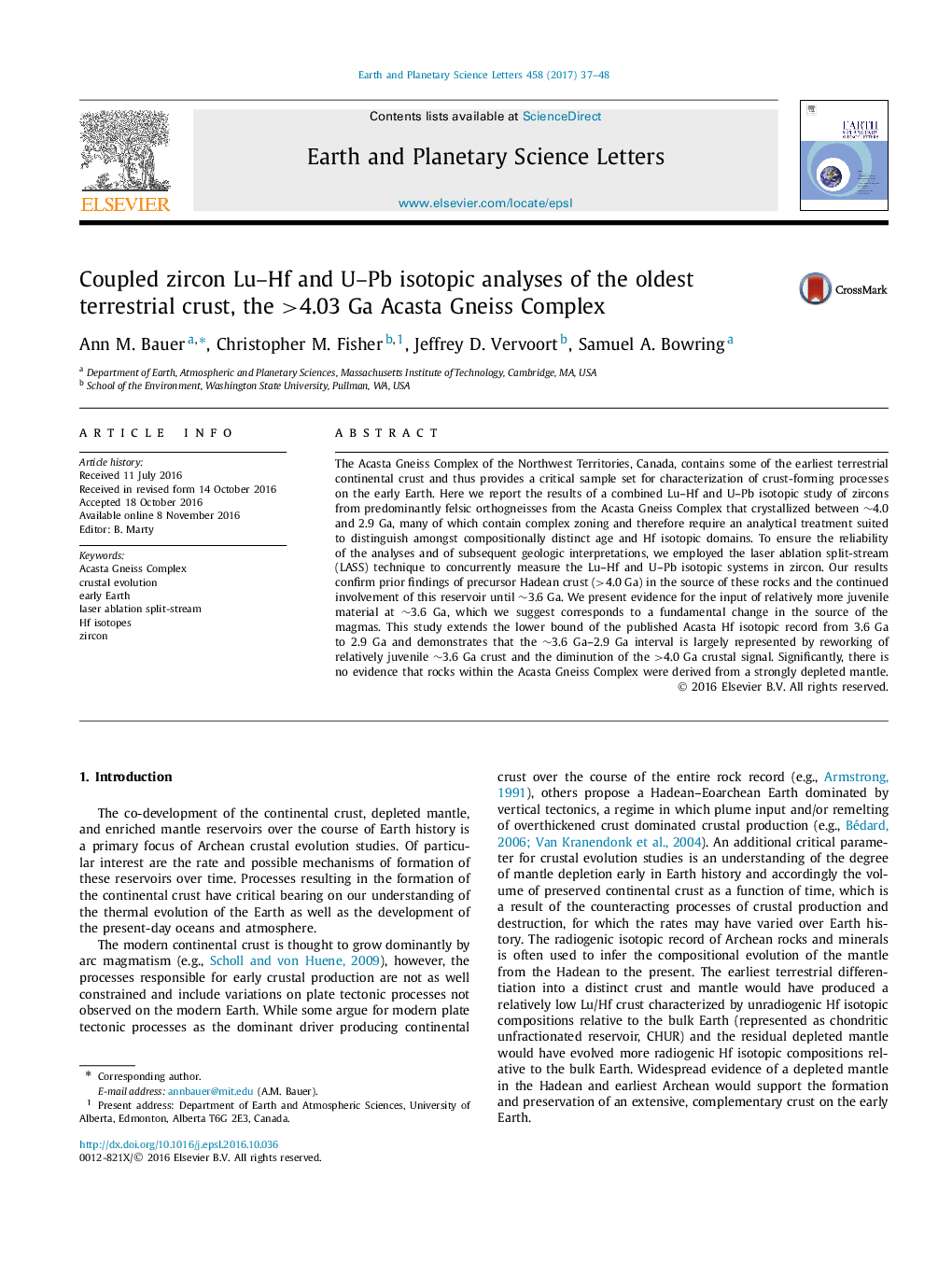| کد مقاله | کد نشریه | سال انتشار | مقاله انگلیسی | نسخه تمام متن |
|---|---|---|---|---|
| 5780000 | 1634698 | 2017 | 12 صفحه PDF | دانلود رایگان |

- Robust initial isotopic signatures obtained via laser ablation split-stream technique.
- Evidence of Hadean source material at the Acasta Gneiss Complex (AGC).
- AGC source change at â¼3.6 Ga evidenced by input of juvenile material.
- No evidence of input from a strongly depleted mantle at the AGC.
- We extend the AGC Lu-Hf isotopic record to >1 Ga of magmatic activity (4.0-2.9 Ga).
The Acasta Gneiss Complex of the Northwest Territories, Canada, contains some of the earliest terrestrial continental crust and thus provides a critical sample set for characterization of crust-forming processes on the early Earth. Here we report the results of a combined Lu-Hf and U-Pb isotopic study of zircons from predominantly felsic orthogneisses from the Acasta Gneiss Complex that crystallized between â¼4.0 and 2.9 Ga, many of which contain complex zoning and therefore require an analytical treatment suited to distinguish amongst compositionally distinct age and Hf isotopic domains. To ensure the reliability of the analyses and of subsequent geologic interpretations, we employed the laser ablation split-stream (LASS) technique to concurrently measure the Lu-Hf and U-Pb isotopic systems in zircon. Our results confirm prior findings of precursor Hadean crust (>4.0 Ga) in the source of these rocks and the continued involvement of this reservoir until â¼3.6 Ga. We present evidence for the input of relatively more juvenile material at â¼3.6 Ga, which we suggest corresponds to a fundamental change in the source of the magmas. This study extends the lower bound of the published Acasta Hf isotopic record from 3.6 Ga to 2.9 Ga and demonstrates that the â¼3.6 Ga-2.9 Ga interval is largely represented by reworking of relatively juvenile â¼3.6 Ga crust and the diminution of the >4.0 Ga crustal signal. Significantly, there is no evidence that rocks within the Acasta Gneiss Complex were derived from a strongly depleted mantle.
Journal: Earth and Planetary Science Letters - Volume 458, 15 January 2017, Pages 37-48